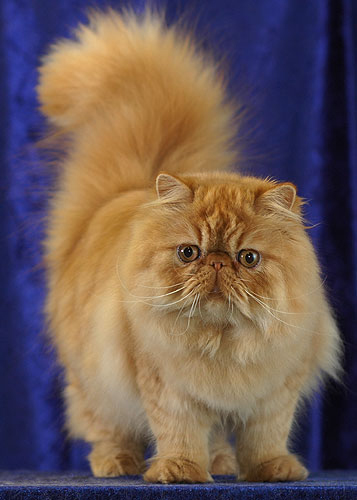Today, join me on a journey as we delve into the captivating history of Persian cat breeds. From their origins in ancient Persia to their rise in popularity across the globe, these stunning felines have captured the hearts of many. Discover the intriguing tales behind their development, the evolution of their stunning features, and the pivotal roles they’ve played in both society and the world of cat fancy. As we explore the rich history of Persian cats, prepare to be enchanted by their elegance and majesty, and gain a deeper understanding of these beloved and regal creatures.
Ancient Origins
Origins in Persia (modern-day Iran)
The history of Persian cats dates back to ancient times in Persia, which is now modern-day Iran. These beautiful felines were highly esteemed by the people of Persia and were considered a symbol of prestige and wealth. It is believed that Persian cats were first domesticated in this region, where their ancestors roamed freely.
Depictions in ancient art
Persian cats have been depicted in various forms of ancient art, including sculptures, paintings, and pottery. These artworks provide evidence of the long-standing admiration and fascination with these graceful creatures. The ancient Persians recognized the beauty of the Persian cat’s long, flowing coat and adorable facial features, which were faithfully captured in their art.
Introduction to Europe
The introduction of Persian cats to Europe can be traced back to the 17th century. They were brought to Europe by traders and explorers who were captivated by their unique appearance. European nobility quickly fell in love with these elegant felines, and they became highly sought-after companions. Their popularity soared, and the breed began to establish itself on the European continent.
Early Development
Arrival in Europe
The Persian cats’ arrival in Europe marked the beginning of their journey towards becoming one of the most beloved cat breeds worldwide. The European climate proved to be well-suited for their long, luxurious coats, making them even more desirable. Their introduction to the European population sparked interest and admiration, and their numbers started to grow.
Breeding for specific traits
As Persian cats gained popularity in Europe, breeders began selectively breeding them for specific traits. By breeding cats with desirable coat colors, facial structures, and temperaments, breeders aimed to refine and enhance the breed’s characteristics. This deliberate breeding led to the development of distinct variations within the Persian cat breed.
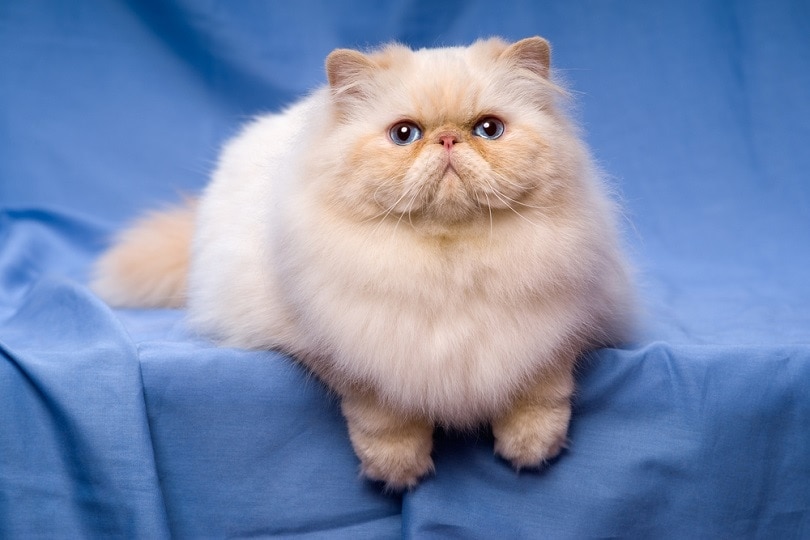
Establishment of Persian cat breed
Thanks to the efforts of dedicated breeders, the Persian cat breed was established in the mid-19th century. Breeders worked tirelessly to maintain the breed’s signature traits, including their long, silky coats, round faces, and gentle dispositions. The establishment of breed standards further solidified the unique qualities that define Persian cats.
Evolution of Breed Standards
The Victorian era standards
During the Victorian era, the first breed standards for Persian cats were formulated. These standards outlined the desired physical characteristics and traits that Persian cats should possess. The Victorian breeders aimed for well-rounded heads, large, expressive eyes, and full, flowing coats. These standards set the foundation for the breed’s development and guided future breeders.
Adjustments and variations in standards over time
Over time, breed standards for Persian cats have seen several adjustments and variations. As the breed evolved and different bloodlines were introduced, there were subtle changes in the preferred facial structures and coat types. Breeders focused on maintaining the breed’s elegance and charm, while welcoming slight variations within the breed standards. These adjustments have contributed to the diverse range of Persian cat appearances seen today.
Popularity and Recognition
Spread of popularity
The popularity of Persian cats spread rapidly in the 19th and 20th centuries. Their regal appearance and calm, affectionate nature appealed to cat lovers worldwide. Soon, Persian cats could be found in households across the globe, from Europe to America, and even in various parts of Asia. Their reputation as a visually striking and gentle companion propelled their popularity to new heights.
Different variations and coat colors
Persian cats come in a wide array of variations and coat colors, adding to their allure. From solid-colored Persians to those with striking tabby patterns and bi-color or pointed patterns, there is a Persian cat to suit every taste. The diverse range of coat colors available, including black, white, cream, blue, and many more, further contributed to the breed’s popularity among cat enthusiasts.
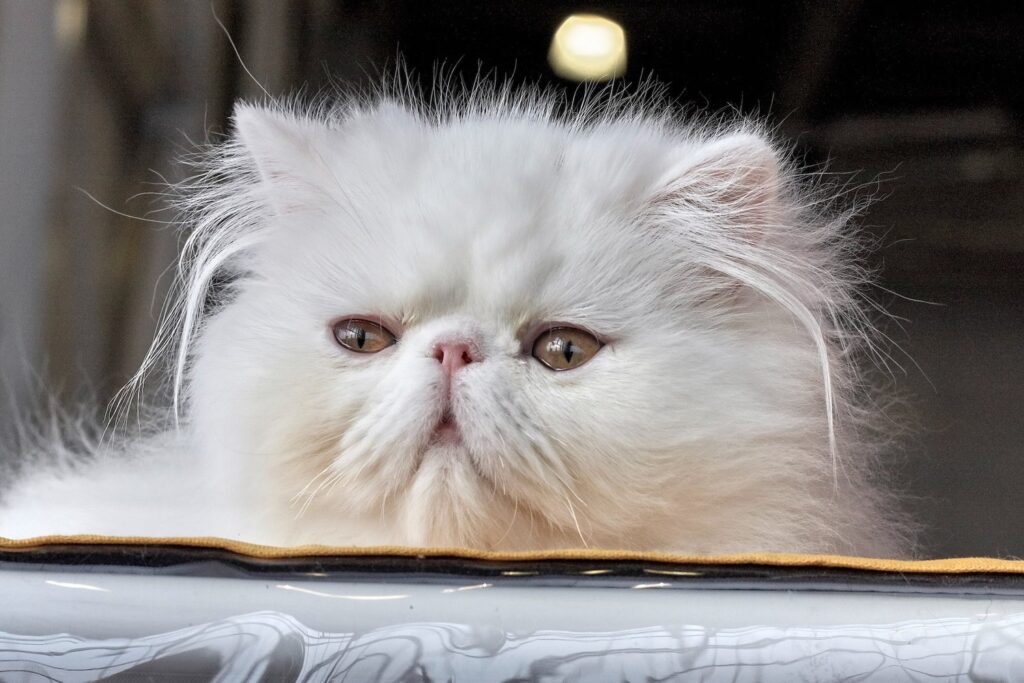
Recognition by cat breed associations
The unique qualities and significant role of Persian cats in the world of feline companionship have not gone unnoticed by cat breed associations. Numerous associations, such as The International Cat Association (TICA) and the Cat Fanciers’ Association (CFA), have officially recognized Persian cats as a distinct breed. This recognition further solidifies the legacy and status of Persian cats in the feline world.
Characteristics of Persian Cat Breeds
Distinct physical features
Persian cats have distinct physical features that set them apart from other breeds. They have round faces with large round eyes, a short nose, and small, rounded ears. Their bodies are medium to large in size, with a sturdy and muscular build. These unique physical characteristics contribute to their overall beauty and elegance.
Long, luxurious coats
One of the most defining features of Persian cats is their long, luxurious coats. Their fur is thick, soft, and silky in texture, requiring regular grooming to prevent matting and keep it in pristine condition. Persian cats have a double coat, consisting of a dense undercoat and a longer outer coat that can grow up to several inches in length.
Variations in facial structures
While Persian cats are often associated with the traditional round face and flat nose, there is some variation in facial structures within the breed. Some individuals may possess a more pronounced nose or a less flat face, which adds diversity to the appearance of Persian cats. These variations contribute to the charm and uniqueness of each Persian cat.
Colors and Patterns
Solid colors
Solid-colored Persian cats showcase a single color throughout their entire coat. Common solid colors seen in Persian cats include black, white, cream, blue, red, and many others. These solid-colored Persians exude elegance and simplicity, allowing the beauty of their coats to shine without any intricate patterns.
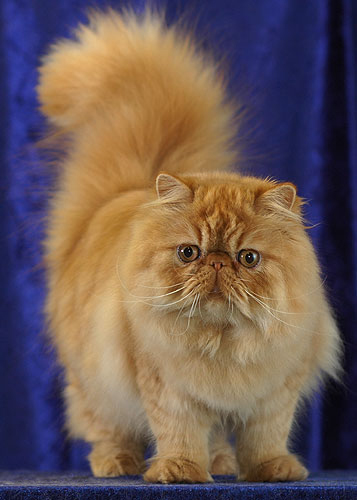
Tabby patterns
Tabby patterns in Persian cats feature intricate markings that add depth and character to their coats. These patterns can be seen in various forms, such as classic tabby, mackerel tabby, and spotted tabby. The combination of tabby patterns with the Persian cat’s luxurious coat creates a visually stunning and unique appearance.
Bi-color and pointed patterns
Persian cats also come in bi-color and pointed patterns, further diversifying their appearance. Bi-color Persians typically have a solid-colored body with contrasting colored markings on their face, paws, and tail. Pointed Persians, on the other hand, have a lighter body color and darker points, including the ears, face, paws, and tail. These patterns add a touch of intrigue and sophistication to the breed.
Breeding Challenges
Genetic health issues
Like many purebred cats, Persian cats are prone to certain genetic health issues. These can include polycystic kidney disease, hypertrophic cardiomyopathy, and progressive retinal atrophy. Responsible breeders prioritize the health of their cats and undertake various measures, such as genetic testing and health screening, to minimize the prevalence of these conditions within their breeding programs.
Breeding difficulties
The distinct physical features of Persian cats, such as their flat faces and short noses, can present breeding challenges. Due to these unique characteristics, Persian cats may experience difficulty giving birth naturally. Breeders often need to assist with the birthing process or resort to cesarean sections to ensure the safety of both the mother and her kittens.
Efforts to improve breed health
Recognizing the importance of maintaining the overall health and well-being of Persian cats, breeders and cat breed associations have taken proactive steps to address and improve breed health issues. Genetic diversity programs, health testing protocols, and responsible breeding practices are some of the measures undertaken to mitigate potential health concerns and promote the longevity of the breed.
Persian Cats in Popular Culture
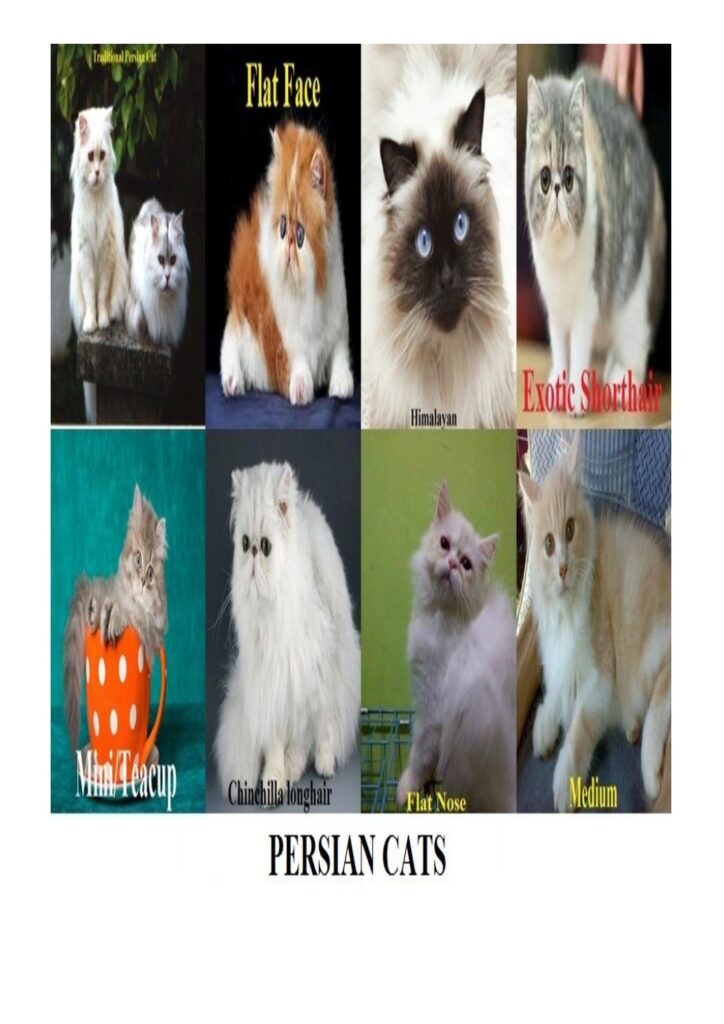
Popularity in art and literature
Throughout history, Persian cats have captivated the imagination of artists and writers, leading them to be prominent figures in various forms of art and literature. Their striking appearance and regal demeanor have made them a favored subject for painters, sculptors, and authors alike. Persian cats have been immortalized in countless artworks and literary works, further cementing their place in popular culture.
Famous Persian cat owners
Persian cats have also found their way into the hearts of numerous famous personalities throughout history. Notable figures such as Florence Nightingale, Marilyn Monroe, and Andy Warhol were proud owners of Persian cats. These famous associations have contributed to the breed’s popularity and have further solidified their place in popular culture.
Persian cats in movies and TV shows
The undeniable charm and beauty of Persian cats have made them a popular choice for film and television productions. These elegant felines have been featured in various movies and TV shows, often portrayed as sophisticated and dignified companions. Their captivating presence on screen continues to capture the hearts of audiences worldwide.
Different Varieties of Persian Cats
Traditional Persian
The traditional Persian represents the classic look and features of the Persian cat breed. They have the iconic round face, flat nose, and long, flowing coat. These cats exude elegance and regality, with their serene demeanor making them perfect lap companions. The traditional Persian remains a beloved variety cherished for its timeless beauty.
Exotic Shorthair
The Exotic Shorthair is a variation of the Persian breed with a shorter, plush coat. While they may have a similar facial structure to the Persian cat, their coat requires less grooming maintenance. Exotic Shorthairs have gained popularity due to their adorable expressions and easy-to-care-for coats.
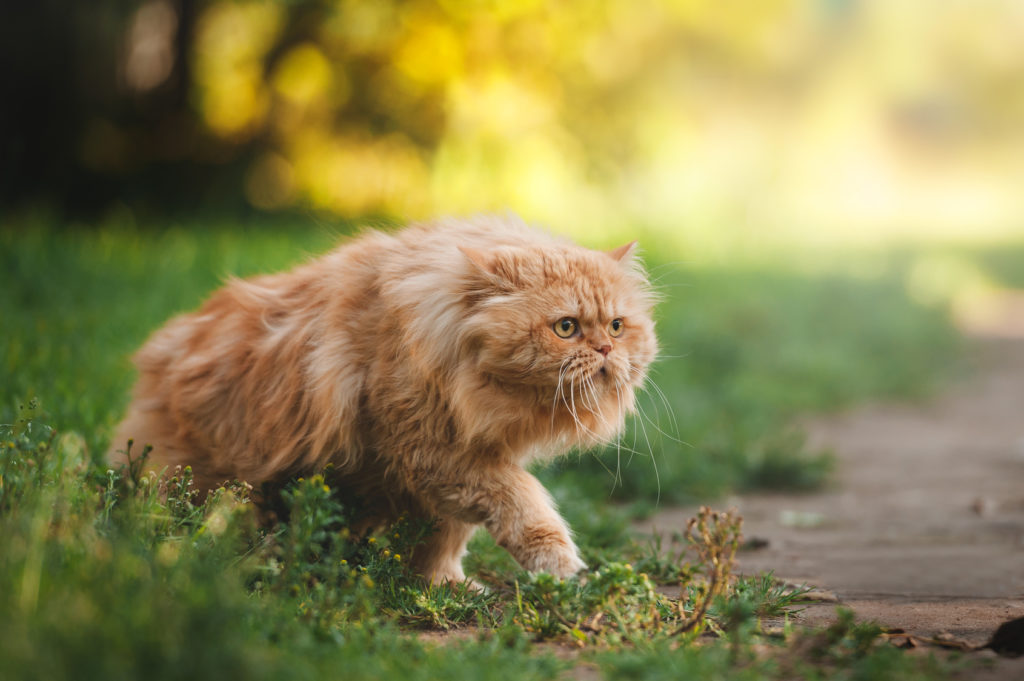
Himalayan
Himalayans, also known as Colorpoint Persians, are a crossbreed between Persians and Siamese cats. They feature the striking pointed coat pattern of the Siamese with the luxurious coat and facial structure of the Persian. Himalayans are known for their sweet and gentle nature, making them wonderful companions.
Maintaining and Caring for Persian Cats
Grooming needs
Persian cats require regular grooming to maintain the health and beauty of their coats. Daily brushing is necessary to prevent matting and tangling, as their long fur is prone to knotting. Regular baths, ear cleaning, and nail trimming are also important aspects of their grooming routine. Ensuring a clean and well-groomed Persian cat is crucial for their overall well-being.
Nutritional requirements
To support their long, luxurious coats and overall health, Persian cats should be provided with a balanced and nutritious diet. High-quality cat food specially formulated for long-haired breeds can help maintain the luster and condition of their coats. It is important to consult with a veterinarian to determine the ideal diet and feeding schedule for your Persian cat.
Healthcare essentials
Regular veterinary check-ups are essential for the well-being of Persian cats. Routine vaccinations, parasite prevention, and dental care should be part of their healthcare regimen. Additionally, Persian cats may require special attention to their eyes and tear ducts to prevent tear staining and potential eye infections. Adequate healthcare ensures that Persian cats lead happy and healthy lives.
Common Persian Cat Questions
Are Persian cats good with children?
Yes, Persian cats are generally known to be gentle and tolerant, making them suitable companions for children. However, it is important to supervise interactions between young children and cats to ensure both parties are comfortable and safe.
How often should I groom a Persian cat?
Persian cats should be groomed daily to prevent matting and keep their coats in top condition. Regular grooming sessions also provide an opportunity for bonding with your cat and can help monitor their overall health.
Do Persian cats have any inherent health issues?
Persian cats are prone to certain genetic health issues, including polycystic kidney disease, hypertrophic cardiomyopathy, and progressive retinal atrophy. Genetic testing and health screening can help identify potential health concerns and assist breeders in making informed breeding decisions.
How can I prevent eye stains in Persian cats?
To prevent eye stains in Persian cats, regular cleaning of the eye area is necessary. Using a damp cloth or appropriate eye cleaning solution, gently wipe away any discharge or stains. Regular grooming and maintaining good eye hygiene can help minimize eye stains.
Can Persian cats live in apartments?
Yes, Persian cats can adapt well to apartment living. They are generally calm and low-energy cats that will appreciate a cozy indoor environment. Providing them with scratching posts, toys, and regular interaction will help keep them mentally and physically stimulated.
What is the average lifespan of a Persian cat?
The average lifespan of a Persian cat is typically between 12 to 16 years. However, with proper care, a Persian cat can live well into their late teens or even early twenties.
Are Persian cats hypoallergenic?
Persian cats are not considered hypoallergenic. While they do produce less dander than some other breeds, they can still cause allergies in individuals who are sensitive to cat allergens. Regular grooming and maintaining a clean living environment can help reduce allergens.
How should I clean my Persian cat’s ears?
Cleaning your Persian cat’s ears should be done with caution and gentle care. Use a veterinarian-recommended ear cleaning solution and damp cotton balls or cotton pads to clean the visible parts of the ears. It is important to avoid inserting anything deep into the ear canal and to consult with a veterinarian if there are any concerns.
Do Persian cats require a special diet?
Persian cats do not require a special diet, but they may benefit from a diet specifically tailored for long-haired breeds. These diets often contain ingredients that support coat health and reduce the risk of hairballs. Consult with a veterinarian for recommendations on the most suitable diet for your Persian cat.
Are Persian cats prone to obesity?
Persian cats have a tendency to gain weight if their caloric intake is not regulated. It is important to monitor their food portions and provide them with a balanced diet to prevent obesity. Regular exercise through interactive play sessions can also help keep them active and maintain a healthy weight.
